Industries are rapidly evolving with the latest technology and digital modernization as they move to a cloud-based system that offers numerous time, cost, and efficiency advantages. However, the digital and cloud industry has evolved significantly over the past decade.
Businesses and industries that initially shifted their presence to the cloud or applications are now facing difficulties. The design of old systems and applications was not to hold the massive amount of data and complexities that today's users possess.
The solution which comes forward is "Application Modernization." The application modernization industry has become so crucial that it has a CAGR of 16.8%, growing to $24.8 billion by 2025.
What is Application Modernization?
Modernization is crucial for organizations. It helps them address their customers' growing needs and make their business operations efficient. It includes upgrading the tools, systems, and practices to the latest versions or standards. Modernization in cloud computing means transforming the organization's data, applications, and processes into Cloud First strategy.
One essential element of Cloud First strategy is "Application Modernization." In this process, the organizations update their application to cloud-first models. It is also commonly known as "Legacy Modernization" because it moves from an outdated to a modernized application.
The process includes upgrading the following domains:
- SQL database
- Linux web apps
- .NET apps
- SAP apps
- Java apps
What benefits businesses can get from Application Modernization?
With time cloud computing, applications, processes and standards evolve. The applications businesses are using may have been very significant at the beginning, but they will be unable to keep up with the fast-paced digitalization. They will lose their ability to provide a seamless user interface to employees and customers, be unable to process large amounts of data, or have other inconveniences.
Acquire new software and applications compatible with the latest security standards: AI, IoT, and others. You could also create an application from scratch and transform the existing data into a new application. Both can take a reasonable amount of time and cost.
While using application modernization, businesses avoid costly and time-consuming ways. They can upgrade their existing application and cloud model to new standards. Organizations are extending their application lifespan while having these additional benefits:
- Increase Efficiency
Application modernization is an effective way to increase the efficiency of the organization. It reduces the cost and time by avoiding the complete replacement of the framework. Organizations can save time and human resources to utilize other things through these practices.
- More Time for Innovation
When organizations spend less time on maintaining or acquiring applications, they can dedicate time to innovation and advancement. With the help of cloud bases systems, businesses can save time and automate their processes. Moreover, the business can provide their customer with an enhanced experience to stay ahead of its competition.
- Agile and Compatible
One significant advantage of application modernization is that it enables the organization's application and framework to work with the latest technology and compliance. Furthermore, the updated application will continue to work for an extended time.
The updated application can work seamlessly even when the data and workload have increased along with automated scaling. Organizations highly benefit from application modernization for their long run and continuous growth.
- Reliable and Secure
The organization can secure its data, data backup, risk assessment, and many other security features through application modernization. Outdated applications develop gaps in cyber security and are vulnerable to data breaches. They will also have challenges in being compliant with security and risk frameworks.
Steps for Application Modernization
Organizations can execute application modernization in the following simple steps:
- Create A Plan
The first thing a plan needs is to have defined goals and objectives. Before an organization executes the application modernization, it must have clear short and long-term goals.
- Implement The Plan
After the goals are defined, organizations can enter the plan execution phase. The execution of the plan requires new skills and processes. Moreover, it can show gaps and improvements in the framework. Through implementation, businesses can make strategies more effective and make necessary improvements.
- Monitor Operations
The application modernization is not a one-time implementation program. Although, it extends the lifespan of the existing applications and enables automation. The application modernization can be used for several cloud services and help organizations align it with their growth and scale the model.
In Conclusion
Many organizations face the challenge of bringing innovation and modernization. The struggles also include upgrading the applications and moving to a cloud-first approach. The reality is that it is not an easy task to upgrade the whole framework.
Organizations can reach out to professionals like Definity First to fulfill their cloud computing needs. With expertise in the cloud-first approach, Definity First will help you scale your organization with increased efficiency, outcome, and customer satisfaction. Visit the website today to contact us.


